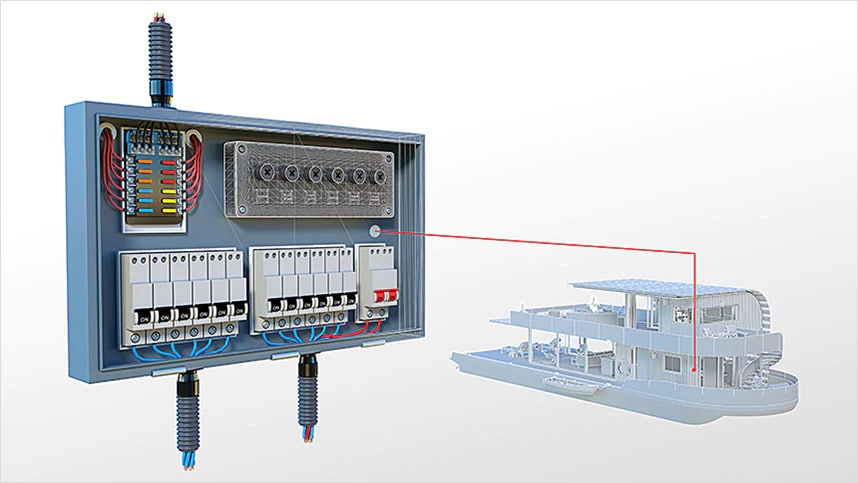Reliable Electrical Engineering Design Services Tailored to Specific Needs
Wiki Article
Innovative Electric Design Solutions for Modern Facilities
The development of modern-day framework necessitates cutting-edge electrical design solutions that not just boost functional performance however additionally address sustainability difficulties. As urban environments expand significantly complex, integrating innovations such as clever grids and renewable resource sources becomes paramount. These developments not only guarantee to optimize power intake but additionally foster strength against future demands. The landscape of electric design is undertaking quick transformation, prompting a better examination of arising fads and their effects for lasting facilities practicality. What might the future hold for those who accept these ingenious approaches?Value of Innovative Electric Design
Cutting-edge electric design plays a critical duty in modern facilities, influencing not just efficiency however likewise sustainability. As cities progress and the demand for energy rises, the need for innovative electric systems ends up being paramount. These systems should not only satisfy existing demands however likewise anticipate future growth and technological innovations.A well-executed electrical design can considerably lower energy consumption, consequently lowering functional expenses and minimizing environmental influence. By integrating renewable resource sources, such as photovoltaic panels and wind turbines, cutting-edge layouts can boost energy self-reliance and durability. Clever grid technologies enable for real-time surveillance and management of energy distribution, optimizing efficiency and decreasing waste.
Safety is another crucial element of electric design. Carrying out strenuous criteria and advanced innovations can minimize threats related to electric failures, making sure a secure environment for businesses and citizens alike. Furthermore, ingenious designs facilitate adaptability, enabling facilities to incorporate arising technologies seamlessly.
Key Trends in Electric Design
As the landscape of electric design proceeds to advance, a number of key trends are shaping the future of the market. One substantial fad is the integration of smart technology right into electrical systems. The spreading of the Net of Things (IoT) has made it possible for real-time monitoring and control of electric tools, boosting performance and helping with anticipating upkeep.An additional fad is the expanding emphasis on modular design. This method enables scalable and flexible options, making it possible for infrastructure to adjust to altering requirements without extensive improvements. In addition, making use of advanced simulation tools and Building Info Modeling (BIM) is ending up being progressively prevalent, simplifying the design process and boosting partnership amongst stakeholders.
Moreover, innovations in products science are bring about the growth of lighter, much more sturdy, and energy-efficient parts. This innovation is particularly important for high-performance structures and infrastructure jobs.
Last but not least, there is a marked shift in the direction of data-driven decision-making - electrical engineering design services. Leveraging data analytics assists developers maximize systems for performance and cost-effectiveness. With each other, these fads symbolize a transformative period in electric design, boosting functionality, sustainability, and resilience in modern framework
Sustainable Power Solutions
Lasting energy remedies are significantly ending up being a critical focus in electrical design, showing a broader commitment to environmental duty and resource efficiency. These solutions aim to lessen ecological impact while optimizing energy consumption in numerous infrastructures, from domestic structures to large industrial centers.Among the foremost techniques involves the combination of eco-friendly energy resources, such as photovoltaic panels and wind generators, into electrical systems. This not only reduces reliance on nonrenewable fuel sources yet also improves energy strength. In addition, ingenious energy storage space systems, such as advanced batteries, make it possible for effective management and distribution of power, making certain that excess power generated throughout top manufacturing can be utilized during high demand durations.
Additionally, energy-efficient design methods are being taken on to improve overall system performance. This includes using energy-efficient lights, cooling and heating systems, and wise structure technologies that keep track of and adjust power usage based on occupancy and ecological conditions.
Smart Grid Technologies
The execution of lasting power services naturally leads to the exploration of clever grid technologies, which play an essential duty in updating electrical systems. Smart grids utilize advanced communication innovations and data analytics to boost the dependability, performance, and sustainability of power circulation. By incorporating electronic modern technology with traditional grid infrastructure, these systems promote real-time monitoring, automated control, and enhanced decision-making capabilities.One of the key functions of wise grids is their capability to More Bonuses accommodate renewable resource sources, such as solar and wind power. This flexibility not just lowers reliance on nonrenewable fuel sources but additionally enables for an extra decentralized energy production version. Clever grids allow demand feedback programs, where consumers can change their energy use based on real-time pricing, thus advertising energy conservation and reducing peak load needs.
Furthermore, smart grid technologies enhance grid strength by allowing quicker recognition and resolution of blackouts, ultimately lessening downtime. With predictive upkeep and analytics, utilities can optimize procedures and improve service distribution. As cities and neighborhoods remain to evolve, wise grid technologies are necessary for building a reliable and sustainable electrical infrastructure that satisfies the needs of modern culture.

Future-Proofing Infrastructure
To guarantee long-term stability and versatility, future-proofing framework is crucial in the swiftly progressing landscape of electric design services. As modern technology developments and energy needs change, it is important that electrical systems are designed with flexibility in mind. This requires incorporating scalable remedies that can Home Page fit future upgrades without requiring substantial overhauls.
Furthermore, sustainability has to be a foundation of future-proofed layouts. Using renewable resource sources, such as solar and wind, and maximizing energy effectiveness check this site out minimize dependence on fossil fuels, straightening with global initiatives to combat climate adjustment.
Conclusion
By prioritizing sustainability, effectiveness, and adaptability, these services resolve the advancing needs of power systems. The integration of smart grid modern technologies and sustainable power services improves resilience and reduces operational costs.A well-executed electrical design can substantially lower power intake, therefore lowering functional costs and decreasing ecological effect. By incorporating eco-friendly energy resources, such as solar panels and wind generators, ingenious styles can enhance power self-reliance and strength. In addition, cutting-edge energy storage systems, such as sophisticated batteries, allow efficient management and circulation of power, ensuring that excess power generated throughout top manufacturing can be used during high need periods.
Clever grids make it possible for need response programs, where customers can change their energy use based on real-time prices, consequently promoting power preservation and minimizing peak lots needs. (electrical design services)
As technology developments and power needs shift, it is essential that electric systems are developed with adaptability in mind.
Report this wiki page